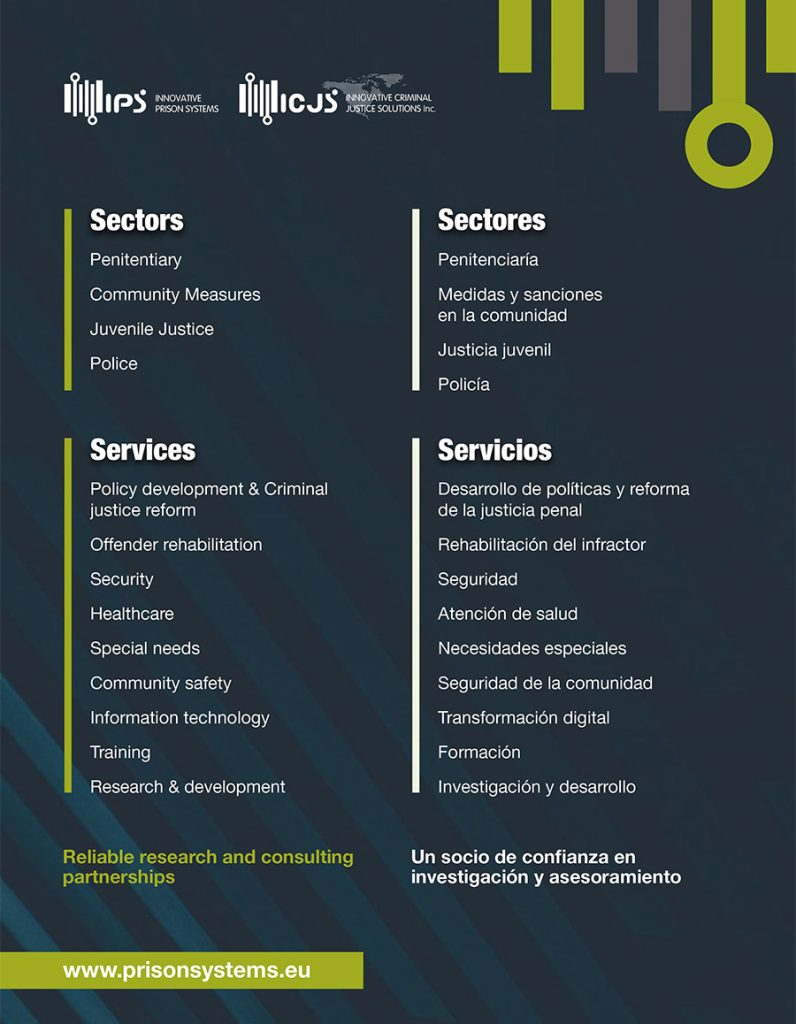Read this edition’s Panel background article in which Frank J. Porporino draws on nearly 50 years of experience in corrections to explore what truly works best in correctional practice and why getting it right matters more than ever.
The power of people in rehabilitative behaviour change is all too often neglected in favour of a bureaucratically streamlined, "doing more with less".
Theresa A. Gannon, DPhil, Professor of Forensic Psychology at University of Kent, UK & Director of the Centre of Research and Education in Forensic Psychology (CORE-FP)

Theresa A. Gannon, DPhil
Professor of Forensic Psychology at University of Kent, UK & Director of the Centre of Research and Education in Forensic Psychology (CORE-FP)
Over the past few decades, considerable efforts have been made to improve rehabilitation and community re-entry effectiveness. Professionals have focused on gathering research to inform such efforts and on developing sophisticated research evaluations. Yet alongside these developments, correctional policy makers have been under immense pressure to cut costs and also provide state of the art rehabilitation. These pressures have resulted in cost savings that involve cutting back on staff, training opportunities, and psychological expertise.
The power of people in rehabilitative behaviour change is all too often neglected in favour of a bureaucratically streamlined, “doing more with less” approach that ignores the inherently human element of rehabilitation and the surrounding correctional environment.
The implications of these pressures are huge. Should the important task of rehabilitation – which incorporates complex psychological concepts and alliance building – be farmed out to paraprofessionals who have not been extensively trained in this realm? Would they know how to handle complex therapeutic situations requiring psychological expertise? Furthermore, consider the surrounding correctional environment that should work synergistically with rehabilitation. If there are only just enough correctional officers to run a basic regime, will officers have enough time and support to treat correctional residents with the dignity and respect they deserve?
We know that rehabilitation is effective. But these gains in effectiveness need to be supported by people power both within rehabilitation as well as the surrounding environment. If we continue to ignore the human element of rehabilitation then even the best programs will not have their intended outcomes.
The changes we are seeing are important. The big problem is that policymakers don’t seize on that progress, and they don’t advertise that information.
James Bonta, Ph.D., Co-author of “The Psychology of Criminal Conduct” (RNR model), Canada

James Bonta Ph.D.
Co-author of “The Psychology of Criminal Conduct” (RNR model), Canada
I think the biggest misconception about what works in offender rehabilitation is this idea that a reduction in recidivism of 10 or 15%, which is what we typically see in real-world studies, “doesn’t sound like much.”
My response to that is to compare it with what we see in medical sciences. Take the famous aspirin study, for example, which looked at giving people a daily dose of aspirin to prevent heart attacks. The reduction in deaths was 3%. In the context of cancer treatment like chemotherapy or radiation, the improvement in survival rates is often around 10%. Most people will not pass on treatment because it only helps 10% of the time.
[Read the full interview here.]
Trained desistors help deliver incare rehabilitation programmes and support supervisee case management, tapping on their lived experiences to motivate change.
Karen Lee, Director of the Rehabilitation and Reintegration Division, Singapore Prison Service

Karen Lee
Director of the Rehabilitation and Reintegration Division, Singapore Prison Service
The Singapore Prison Service (SPS) adopts a throughcare approach towards rehabilitation and reintegration, where coordinated efforts to address the risks and needs of inmates during incarceration continue in the community upon release. This is informed by research which shows rehabilitation takes place best in real-life settings and inmates who undergo effective programmes in prison and structured scaffolding in the community are less likely to re-offend.
Suitable inmates serve the tail-end of their sentence on Community-Based Programmes. Case management with employment and accommodation assistance, counselling, complemented by GPS electronic monitoring and mandatory urine tests, help support supervisees during reintegration and deter re-offending.
Strong community support is crucial for desistance. SPS is part of the Community Action for the Rehabilitation of Ex-Offenders (“CARE”) Network, an alliance of government and non-government organisations incepted in 2000, to coordinate aftercare reintegration efforts and mobilise community support for ex-offenders and their families. Today, the CARE Network comprises over 170 community partners who provide referral and religious services, and prosocial support to ex-offenders and their families. SPS is also growing the number and capabilities of desistors – ex-offenders who successfully turned their lives around – by equipping them with skills like para-counselling and group facilitation. Trained desistors help deliver incare rehabilitation programmes and support supervisee case management, tapping on their lived experiences to motivate change in inmates.
Women are far less likely to commit crimes or reoffend, yet most policies and correctional practices treat them as if they pose the same level of threat.
Emily J. Salisbury, Ph.D., Associate Professor and Director of the Utah Criminal Justice Center at the University of Utah College of Social Work, USA

Emily J. Salisbury, Ph.D.
Associate Professor and Director of the Utah Criminal Justice Center at the University of Utah College of Social Work, USA
The collective wisdom that has emerged from research with women in the justice system over the last two decades shows that we need to rethink how we apply traditional correctional models – particularly the Risk, Need, and Responsivity (RNR) principles – to women and girls. This body of evidence includes studies identifying the unique life experiences that lead girls and women into and out of the justice system, validation of gender-specific tools like the Women’s Risk Need Assessment (WRNA), and stronger outcomes when women receive treatment tailored to their specific needs.
One of the most important findings is that the concept of “risk” looks very different for women than it does for men. Women are far less likely to commit crimes or reoffend, yet most policies and correctional practices treat them as if they pose the same level of threat. Gender, in fact, is one of the strongest predictors of criminal behavior – meaning we should not be using the same strategies across the board. Systems can still hold women accountable while also recognizing that they generally pose lower risk and have different needs.
Many of the factors that drive women’s involvement in crime – such as experiences with unhealthy intimate relationships, mental health symptoms like anxiety and depression, and the lasting impact of trauma – are not captured by traditional risk assessment tools. What doesn’t get assessed, won’t get addressed. The WRNA captures each of these and has found them to be crucial in reducing women’s pathways to crime.
In the traditional RNR model, gender is considered a specific responsivity factor in treatment planning – like whether someone needs transportation or a has learning disability. But research tells us gender should be central to how we design and deliver correctional programs. According to the evidence, when we treat women based on what we know about their lived experiences and needs – including trauma-informed and gender responsive care – outcomes improve dramatically.
To achieve rehabilitation, staff must be valued; the change process needs encouragement and deliberate actions; and technology must be part of it.
Faye S. Taxman, Ph.D., University Professor, Schar School of Policy and Government, George Mason University, USA

Faye S. Taxman, Ph.D.
University Professor, Schar School of Policy and Government, George Mason University, USA
Rehabilitation as an ideal (goal) is based in the premise that people can change and that correctional systems have a role in facilitating that change. To do this means: 1) staff must be valued; 2) the change process needs encouragement and deliberate actions; and 3) technology must be part of it.
Staff are the cornerstone of rehabilitation, whether in treatment or security roles. Valuing staff means paying a salary commensurate with the value of the work, providing benefits to recognize their professionalism, and offering skill enhancement interventions to give them tools to be effective. Their role should not be punisher or compliance manager; instead, they should be behavioural managers or role models.
Changing one’s behaviour, attitudes, or perspectives can be difficult. It depends on believing there is hope for a better life and future, two ingredients that are often lacking. The correctional system needs to embrace the change process through deliberate actions to encourage prosocial behaviour and address health factors that hinder sustainable changes. Using incentives or rewarding positive behaviours triggers a biosocial response that can help retrain behaviour and/or attitudes. Correctional staff should use incentives to promote the civil behaviour that society desires to see, setting this as a role model and behavioural standard.
Finally, we live in a digital world where people use technology daily to meet their needs. Learning to use technology and the self-care and self-help tools it can provide, can reinforce a positive stance and allow individuals to explore new ideas, and individualized care. Technology should be part of programming to give opportunities for individuals to learn, practice, obtain feedback, and progress to new levels.
It should also be embraced by staff for the opportunity to advance their own skills.
We need correctional services to rebalance their focus towards the pursuit of social reintegration in all its facets.
Professor Fergus McNeill, Professor of Criminology & Social Work, University of Glasgow, UK

Professor Fergus McNeill
Professor of Criminology & Social Work, University of Glasgow, UK
From studying corrections over the past 30 to 40 years, mainly in Anglophone countries in the West, I would argue that social, political, and fiscal pressures have encouraged correctional services to become more short-term in their focus, increasingly concerned with the immediate task of assessing and managing the risk of recidivism. While interest in rehabilitation has endured, it has sometimes been restricted to a very specific and narrow focus on trying to identify and address criminogenic needs to bring about rapid behavioural change.
We need correctional services, and more broadly, government and civil society in general, to rebalance their focus, shifting some of the emphasis away from short-term concerns and turning more towards the pursuit of social reintegration in all its facets.
It’s a large-scale project – not one for corrections alone – but one in which correctional services should take a leading role.
Advertisement




